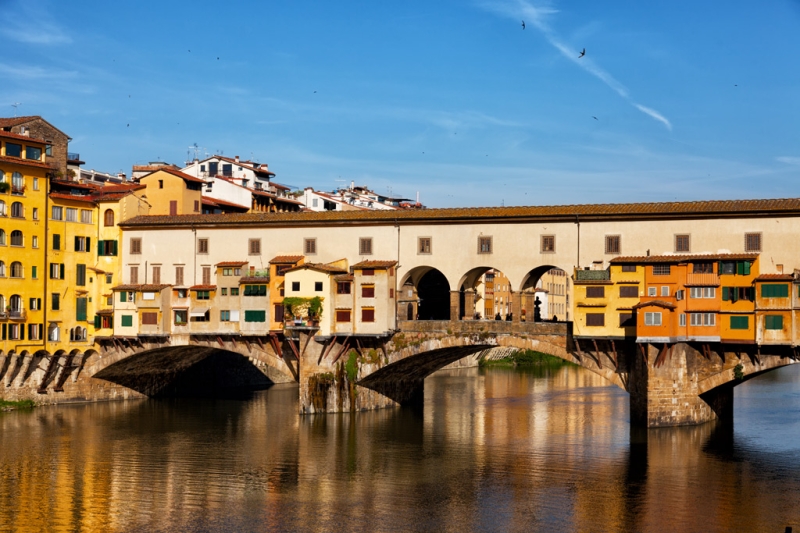
If you are lucky enough to visit Florence (Italy),
be sure to walk along the legendary Ponte Vecchio bridge (on the map). From Italian “Ponte Vecchio” can be translated as “old bridge”: the architecture of this historical monument has remained unchanged since the 14th century. What distinguishes it from other famous European counterparts is the presence of residential buildings, which are located on both sides of the structure.
There used to be an old wooden bridge at this place. It fulfilled only its immediate role – it allowed townspeople to cross the river from one bank to the other. Since the times of the ancient Romans, the structure was destroyed many times by floods and heavy rains, but each time it was rebuilt. After another cataclysm, it was decided to make the bridge stone.
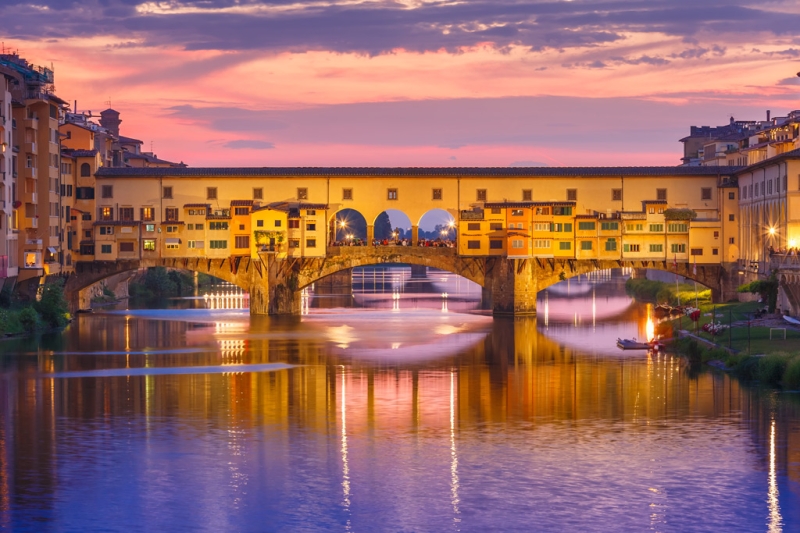
The stone Ponte Vecchio, as we can see it now, is a three-arched structure with a wide observation deck offering stunning views of the Arno River. It was designed and built by the Italian Neri di Fioravanti in 1345, creating a strong, but not without grace, structure. The central arch reaches a length of 30 meters, the side ones – 27.
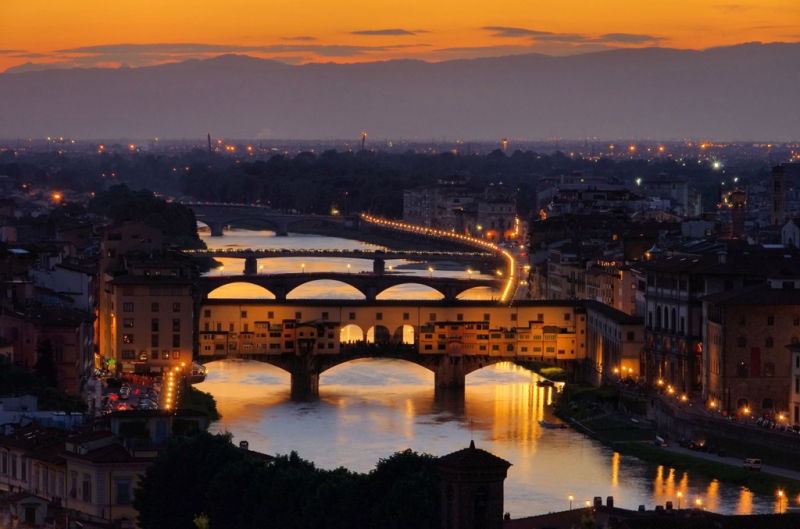
In the 15th century, authorities ordered fish and butcher shops to be moved to the bridge, away from the houses of the local nobility. Since then, Ponte Vecchio has gained fame as the most foul-smelling place in Florence: there were no refrigeration chambers at that time, and under the sun, meat and fish quickly deteriorated, emitting a real stench, and all waste was thrown into the river so that the waters would carry spoiled food away from the city. However, this did not bring results and did not get rid of unpleasant odors.
There were many fishermen and butchers in Florence, so the bridge could not accommodate all the merchants. They had to conquer new sites and become more sophisticated, building and expanding their shops. And today they protrude, stick out and hang over the water, but this does not spoil the appearance at all, but, on the contrary, gives the Ponte Vecchio a special charm.
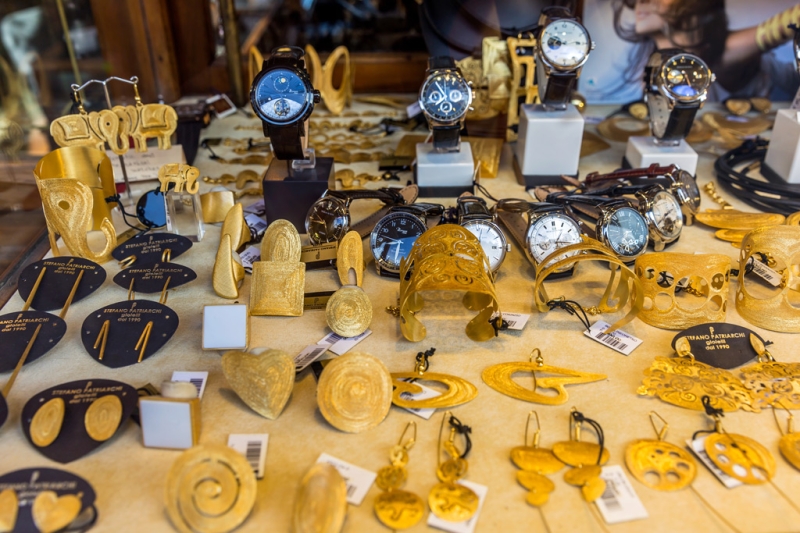
In the 16th century, the bridge was dubbed “Golden”. This is due to the fact that grocery stores were reorganized, and in their place numerous jewelry stores and workshops were located, which still offer customers products made of gold, platinum, silver, decorated with precious stones. There are many people who want to see all this splendor, but not everyone is able to make a purchase: prices for jewelry are steep, and even the simplest ring can cost from 200 euros.
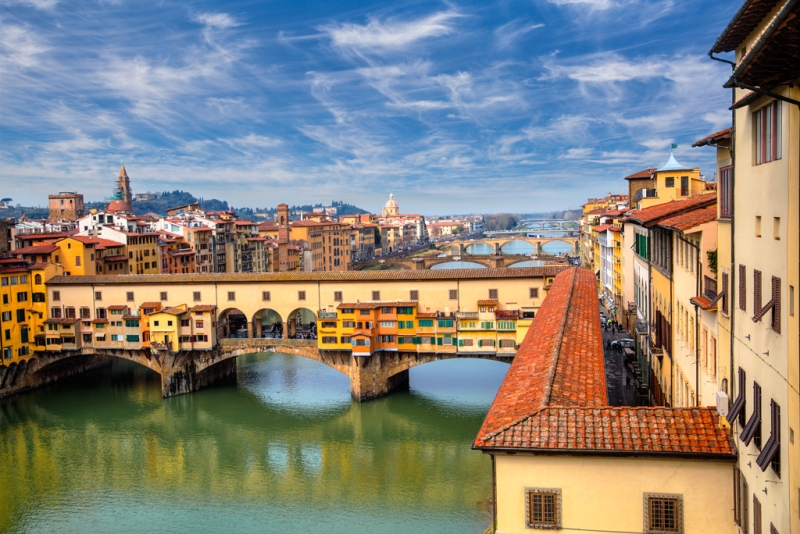
In 1565, a covered walkway was built over the shops and stores. The project was designed by Giorgio Vasari, and the corridor could only be used by members of the court and nobility. There are small round windows along the entire room. According to one legend, they were cut out by order of the ruler and served as a kind of “listening device” in order to be sure of what the people below were gossiping about.
The kilometer-long Vasari Corridor connects the Uffizi Gallery with the Pitti Palace. At the moment, the corridor is officially closed to visitors, but it is possible to get inside. To do this, you need to sign up for a private tour. Currently, the Vasari Corridor is one of the best and unique art galleries in the world. More than 700 paintings by masters of the 16th-17th centuries are stored here. Of particular value is the collection of self-portraits of the most famous Italian (and not only) world-famous artists. Here you can see works by Leonardo da Vinci, Rubens, Titian and many others.
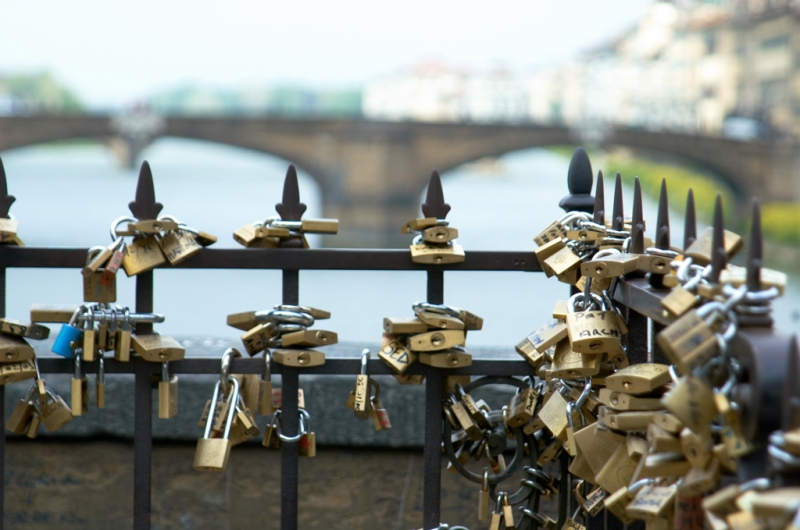
In 1901, a bust of the artist, sculptor and jeweler Benvenuto Cellini was erected in the western part of Ponte Vecchio. This place is popular with couples who, when they come here, hang “love locks” on the fence and throw the keys into the river. Such a gesture is a symbol of their eternal and indestructible feelings. The authorities are trying to fight this, but even a fine of 50 euros for each hanging lock does not stop the lovers.
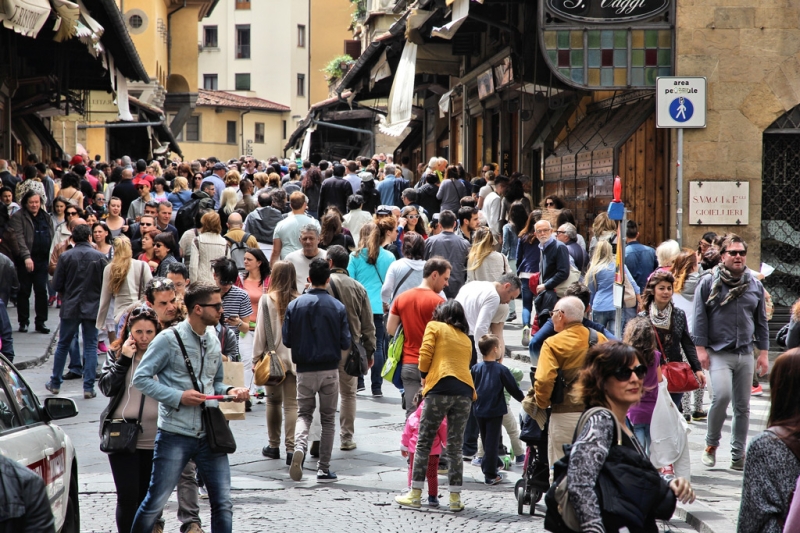
There is an opinion that the modern concept of bankruptcy originated here. If the owner of a shop on the Ponte Vecchio was unable to pay his debts, then, on the orders of the mayors, soldiers were sent to him, who literally smashed and smashed (rotto) the shop (banco). Such actions began to be called “bancorotto”, which literally translates as “broken table”: without it, the merchant could not engage in sales and, as we would say now, became bankrupt.
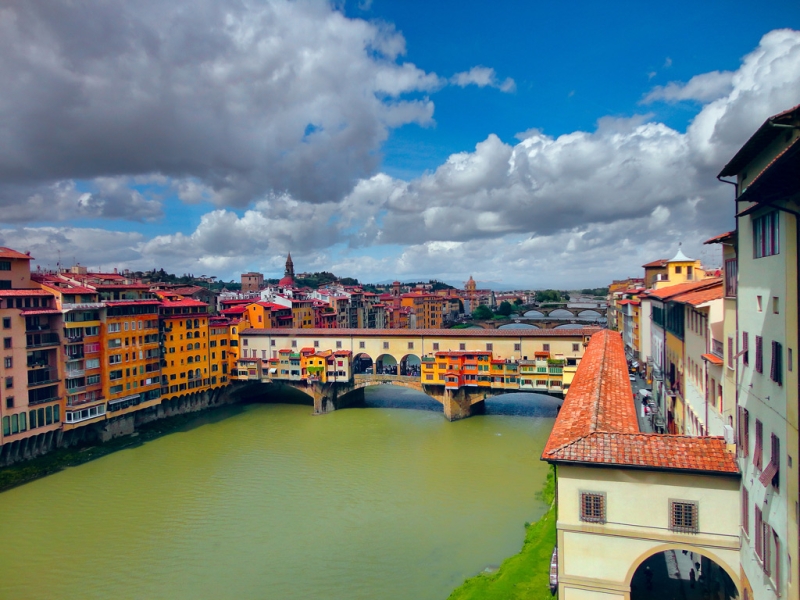
To see the stunning Ponte Vecchio bridge, just take a plane ticket to Florence. Travel time will be from 6 hours, depending on the duration of the transfer. Finding a bridge in Florence is not difficult; just go to the Arno River embankment and ask any passerby which way to go to Ponte Vecchio.
You can find and book the perfect hotels for any trip on OneTwoTrip.

